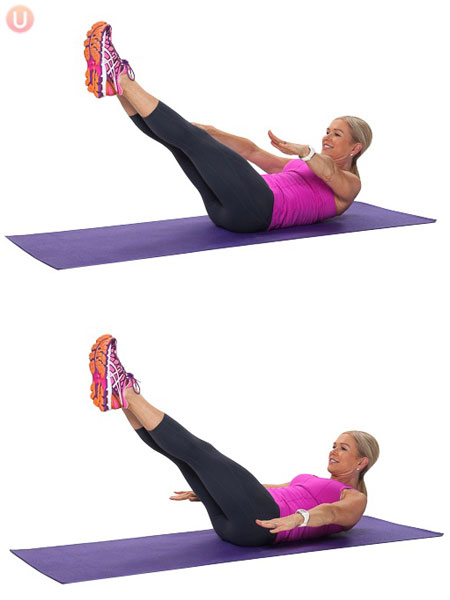How To Do Pilates 100
The Pilates 100 is an exercise that uses the method of Pilates to strengthen the abdominal muscles while teaching your body stability and strengthening your lower back. Pilates is a method of exercise designed to strengthen the core by using gentle, but powerful but controlled movements. In the early 1900’s, Joseph Pilates began to design his technique, which concentrates on proper breathing and correct spinal and pelvic alignment. Today, Pilates continues to grow in popularity because these methodical exercises strengthen your core muscles including your abdominals, back, and hips.
If you learn how to do Pilates 100 you will be learning the most basic and commonly used Pilates exercise. The Pilates 100 also teaches you great breathing habits. You learn that breath can be both powerful and calming at the same time. One modification for the Pilates 100 is to keep your knees at a bent position the entire time. Alternatively if your hip flexors are bothering you, place your feet on the floor and practice the exercise with your legs down.
Even if you’re just getting started with exercise you can still benefit from his method which strengthens the core and back, flattens the tummy, and balances the body’s strength and flexibility. Pilates targets your transverse abdominals, these muscles wrap around like a belt in front of your hip bones and around the small of your back. Think of these muscles like your own internal corset that holds in your internal organs and helps you sit, stand and walk every day. Pilates doesn’t just give you strong abs, these amazing exercise also strengthen your deep postural muscles that support alignment and encourage you to stay strong, long and walking tall.
Here are the steps to performing Pilates 100:
1) Start lying on your back. Bring both knees into the chest to form a tabletop position. Bring your head, neck, and shoulder off the mat. Arms are long at the sides. Extend legs long and lower as far as possible while keeping the abs engaged and back connected to the mat in a slight imprint. (can modify by bending knees or bringing feet to mat with bent knees)
2) Pump the arms up and down in a quick, controlled manner while taking five short breaths in and five short breaths out (like sniffing in and puffing out). Be sure to keep your shoulders and neck relaxed and focus on your abdominal muscles doing all the work.
Targets: core, shoulders
